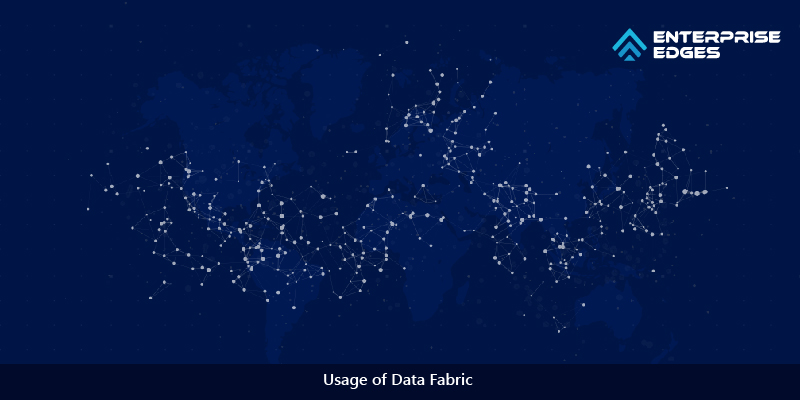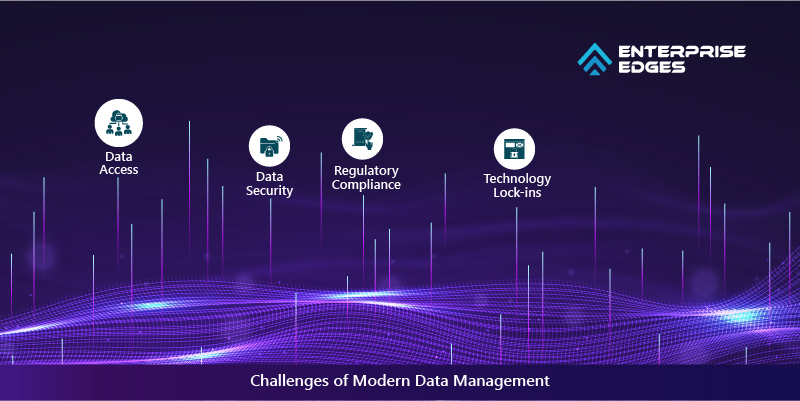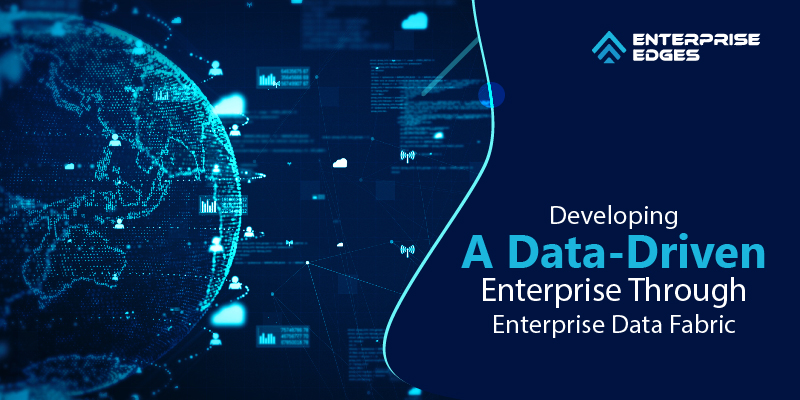Today’s data landscape is progressively hybrid, varied, and changing. Enterprise Data Fabric has become extraordinarily significant and has emerged as a viable strategy for frictionless access and sharing of distributed, dynamic and diverse records.
What Is Data Fabric?
Data fabrics offer a new solution, supporting the dynamic delivery of semantically enriched data. Companies use them to escape the confounds of reactive workflows and create a resilient digital foundation for your business. By weaving together data from internal silos and external sources, data fabrics create a network of information to power countless business applications, AI, and analytics across your enterprise. Data fabric leverages both human and machine skills to access data in place or support its consolidation where needed. It continuously identifies and connects data from disparate applications to discover unique, business-relevant relationships between the available data points. The insight supports re-engineered decision-making, providing more value through rapid access and comprehension than traditional data management practices. For example, a supply chain leader using a data fabric can add newly encountered data assets to known relationships between supplier delays and production delays and improve decisions with the new data (or for new suppliers or new customers).
Building A Data-Driven Enterprise with Enterprise Data Fabric
Enterprise Data Fabric has developed as a viable approach for frictionless access & sharing of dynamic, distributed, and varied records. This is the perfect solution to low-value and high-cost integration cycles. Additionally, data-driven enterprise enables an integrated data layer between the different sources, analytics, orchestration, applications, and insights. It also brings businesses the flexibility to adapt the infrastructure in response to evolving technological requirements. This makes it easy to connect with different infrastructure endpoints with a centralized information management framework for enhanced business agility and speed. Companies can create a data environment that efficiently monitors and manages information across apps, users, and environments with a data fabric solution. For instance, small businesses can invest in a low-cost cloud platform until it expands and needs a highly flexible and more extensive storage solution. It can also leverage the elasticity of Data Fabric to deploy an infrastructure that suits the nature of information and long-term business requirements. Data fabric benefits for businesses are given below:
- Manage on-premises, hybrid environments & cloud simultaneously to drive the company’s agility.
- Use pre-designed modules to connect various sources seamlessly and quicken data delivery.
- Enhance data preparation & governance capabilities to avoid expensive non-compliance fines.
- Enhance integration between disparate apps and sources and map data for fast and easy analysis.
- Gain a real-time view of any company entity to reduce customer churn, mitigate risk, personalize offerings and accomplish goals.
- Reduce the cost of operating, maintaining, scaling, and modernizing legacy systems.
Data Fabric Core Capabilities
A comprehensively designed data fabric solution offers enterprises the following capabilities:
- Transparent Data Management: The aptitude to stay on top of information in regard to availability, responsiveness, & reliability of workspace.
- Unified Data Semantics: One workspace for all document types makes it easy to outline the business purpose & create a single source of truth for a solid analytics experience.
- Autonomous Data Engineering: Just-in-time query optimization for the speed & usage that can forecast consumer needs in one Platform decreases the hassles of knowledge management.
- Centralized Governance: A precisely formulated security policy to distribute access is consistently applied to all types of documents– whether they are on-premises, in the cloud, hybrid & multi-cloud.
- Application & Platform Agnostic: The ability to connect with ML & BI applications of options for consumers and managers alike.
- No Need to Copy or Move Data: Intelligent data virtualization ensures an end-to-end representation of information from various siloed, disparate sources without moving or copying the data.
- A future-ready Infrastructure: Integrating new infrastructure deployments and re-engineering legacy solutions without unsettling the existing deployments and document types.
Usage of Data Fabric

Data-intensive companies are driven by a broad spectrum of real-time applications requiring a scalable, high-speed enterprise data fabric architecture designed to assist millions of transactions simultaneously. Some practical examples of data-driven transformation include:
1. 360-degree View
Companies gain a holistic view of customers’ data from all touchpoints – interactive voice response (IVR), customer relationship management software (CRM), Self-service portal (mobile or web), service chatbots, and field service technicians.
2. Churn Predictions
It helps leverage metadata KPIs to enable ML algorithms to learn and generate advanced, correct, and reliable predictions for information management & integration.
3. Fraud Prevention
They are safeguarding sensitive credit and debit card information with end-to-end encryption and multi-factor authentication of the secret information to avoid potential breaks.
4. Modernization of Legacy Systems
It safely moves records from the existing legacy systems into the data fabric and then uses them as the record database for freshly deployed applications.
5. On-demand Data Provisioning
Enterprise Data Fabric Builds a test data warehouse (DWH) and automates the delivery of anonymous test data to CI/CD pipelines and testers while ensuring complete integrity.
6. Enterprise-Grade Governance
Address current & future regulations with an agile workflow and an information automation solution that orchestrates compliance across systems, apps, reports & documents.
7. Pipelining Enterprise Data
Enable engineers to prepare & deliver accurate & reliable records into data lakes and warehouses from all sources – rapidly and at scale.
Challenges of Modern Data Management

An average enterprise looks radically different from what it was a decade ago. The sheer volume, variety, and integrity of information have entirely changed the approach to data management. With the advent of cloud solutions, many businesses have moved from using a single software to leveraging SaaS growth for speedy development. Companies are now leveraging APIs to run digital marketing campaigns programmatically, CRMs to get contacts, ticketing systems to track support issues, and preparing the most automation for inventory and billing. The typical documents that a business generates and consumes are scattered across numerous sources, all of which need to be integrated, synced and maintained to increase their benefits.
Data-driven business value & data management ecosystem give rise to specific challenges:
1. Data Access
It isn’t easy to control access to specific resources with several distributed systems, especially at different security levels.
2. Data Security
With information being stored across different locations and accessed over multiple endpoints, keeping the APIs, apps & endpoints secure invites massive overhead.
3. Regulatory Compliance
Working with a disparate, siloed system makes it challenging to keep up with the regulatory standards that apply to storing, sharing & distribution of business information.
4. Technology Lock-ins
Once a data ecosystem is deployed on specific software, it is challenging to integrate new sources or convert the existing ones, blocking a company’s aptitude to act on info faster.
Conclusion
For the Enterprise Data Fabric to succeed, enterprises must commit to maintaining the integrity of the architectural components and standards it is built on. Hence, if silos are developed as temporary workarounds, these may be required to be decommissioned when no longer needed. Since the value of the Data Fabric is primarily dependent on the strength of information assembled in the data catalog, out of date, stale or inaccurate metadata can’t leak into the catalog. The successful Data Fabric environments are best in proving their worth when it comes to enabling enterprises to leverage data more effectively and unlocking the full potential of their data assets to increase competitive advantages.
